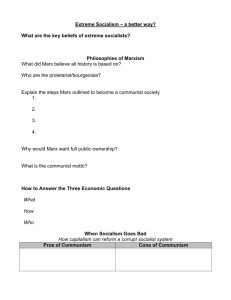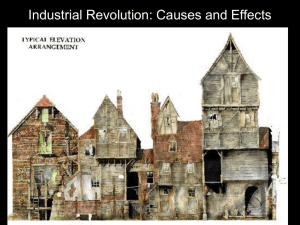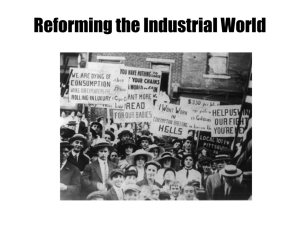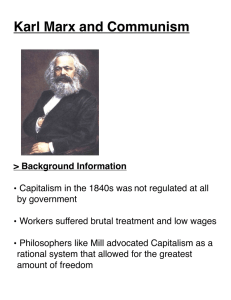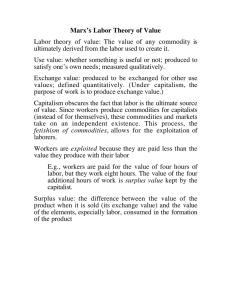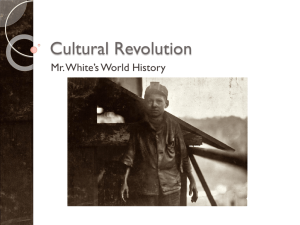Keynes, etc - Petal School District
advertisement
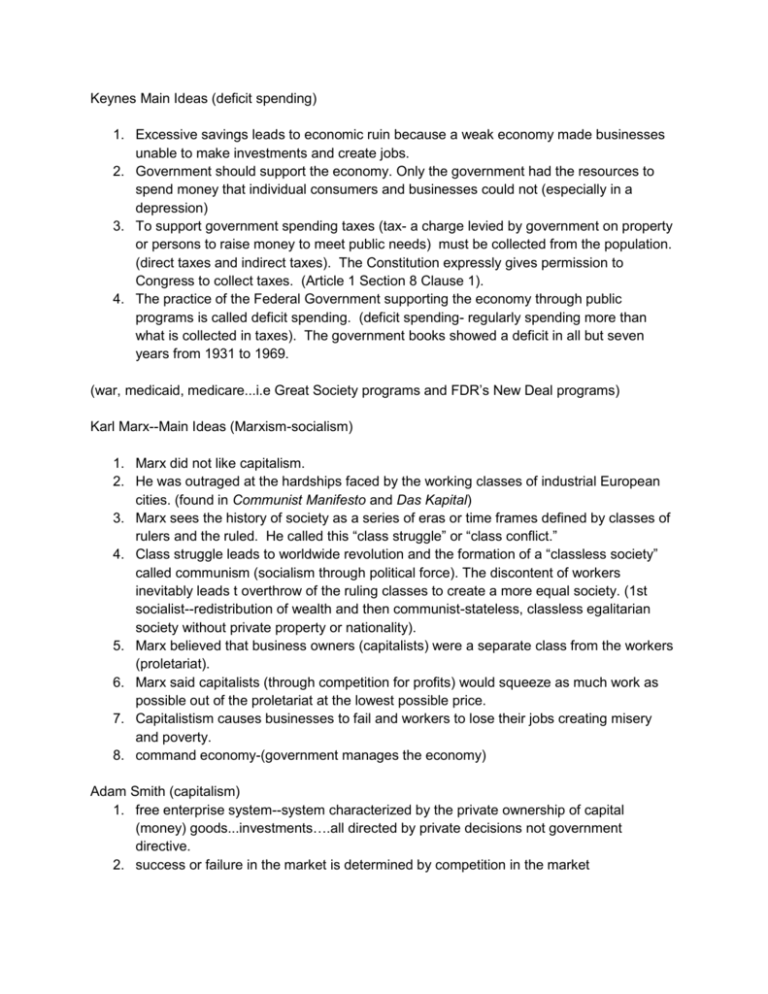
Keynes Main Ideas (deficit spending) 1. Excessive savings leads to economic ruin because a weak economy made businesses unable to make investments and create jobs. 2. Government should support the economy. Only the government had the resources to spend money that individual consumers and businesses could not (especially in a depression) 3. To support government spending taxes (tax- a charge levied by government on property or persons to raise money to meet public needs) must be collected from the population. (direct taxes and indirect taxes). The Constitution expressly gives permission to Congress to collect taxes. (Article 1 Section 8 Clause 1). 4. The practice of the Federal Government supporting the economy through public programs is called deficit spending. (deficit spending- regularly spending more than what is collected in taxes). The government books showed a deficit in all but seven years from 1931 to 1969. (war, medicaid, medicare...i.e Great Society programs and FDR’s New Deal programs) Karl Marx--Main Ideas (Marxism-socialism) 1. Marx did not like capitalism. 2. He was outraged at the hardships faced by the working classes of industrial European cities. (found in Communist Manifesto and Das Kapital) 3. Marx sees the history of society as a series of eras or time frames defined by classes of rulers and the ruled. He called this “class struggle” or “class conflict.” 4. Class struggle leads to worldwide revolution and the formation of a “classless society” called communism (socialism through political force). The discontent of workers inevitably leads t overthrow of the ruling classes to create a more equal society. (1st socialist--redistribution of wealth and then communist-stateless, classless egalitarian society without private property or nationality). 5. Marx believed that business owners (capitalists) were a separate class from the workers (proletariat). 6. Marx said capitalists (through competition for profits) would squeeze as much work as possible out of the proletariat at the lowest possible price. 7. Capitalistism causes businesses to fail and workers to lose their jobs creating misery and poverty. 8. command economy-(government manages the economy) Adam Smith (capitalism) 1. free enterprise system--system characterized by the private ownership of capital (money) goods...investments….all directed by private decisions not government directive. 2. success or failure in the market is determined by competition in the market 3. four fundamental factors of of free enterprise: private ownership, individual initiative, profit, and competition. 4. 2 laws of capitalism: supply and demand, competition. There is an invisible hand (supply and demand and competition) guiding the market. 5. America has a mixed economy-part free-enterprise and part socialism. 6. democracy is not the same thing as capitalism. Democracy is a political system whereas capitalism is an economic system. For the test...make sure to re-read the political systems in chapter one sections one and two. A good practice is the chapter assessment at the end of chapter one in your textbook.



